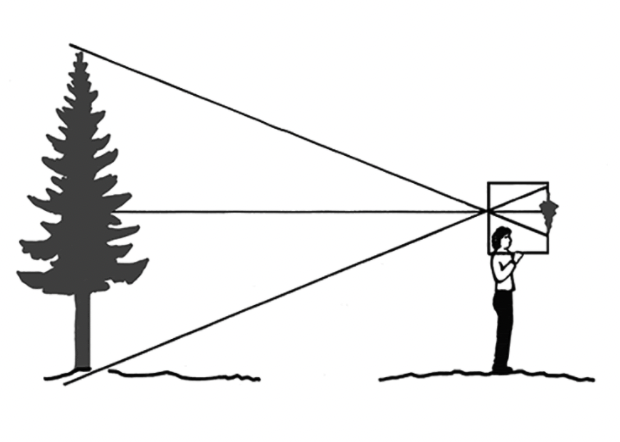Catalyst ED: Artistic & Scientific Processes
Curriculum Guide
Download Curriculum Guide (PDF)
Extended Learning Materials & Art and Science Standards Connections
Scientific Questions:
How do our eyes work and what is happening with the idea of perception?
How does light make this possible?
Artistic Questions:
How can I view the world from different perspectives?
How does looking at an image upside-down impact what I see (or don’t see)?
What happens when I move into the light vs into the dark - how does light create different effects?
Using the Personal Pinhole Camera
Use the Personal Pinhole Theater on a bright sunny day. As your eyes adjust to the dim surroundings (this might take a few minutes), notice if anything appears on the screen. When images do appear, notice their orientation. Are they right side up, or upside down? Are they left-right reversed, or normal?
Carefully move around and notice how the image on the screen changes. Try to position yourself so that two similar objects at different distances away (such as two cars) cast their images on the screen at the same time. Which image is larger? Are both images sharp and in focus at the same time?
Experimentation:
Enlarge the aperture (pinhole) by carefully poking a pencil point through until it’s about half to two-thirds the diameter of the pencil (see photo below). What happens to the image on the screen? If you want to go back to the small hole, just remove the square of foil and tape on a new one. Poke another pinhole and you’re ready to go again.
What's Going On? The Science Behind the Pinhole Theater
The Personal Pinhole Theater is actually a giant camera obscura (Latin for “dark chamber”), or pinhole camera. Light rays from the sun reflect off every point on every object—including, say, a tree. The rays from the tree then hit the outside of the box, except where they can pass through the pinhole. Each light ray, in effect, carries an image of the point on the tree where it originated.
The pinhole lets only a limited number of rays from each point pass through. The rays from each point are projected on a small area of the white viewing screen, without significant overlap from the images of the other points. The result is a clear image of the tree. Any images on the screen are upside down and left-right reversed. (The diagram below shows how the up-down part of this reversal takes place; light rays from only three points are shown for clarity.)
As you can see, the ray from the top of the tree passes through the pinhole and hits the lower portion of the screen. The ray from the bottom of the tree also passes through the pinhole, but hits the upper portion of the screen. This geometry results in the image of the tree appearing upside down on the screen (and left-right reversed, as well).
The farther an object is from the pinhole, the smaller its image will be on the screen (see the diagram below). The focus, or sharpness of the image, is not affected by distance.
Expanded Learning:
Have students learn about the interacting structures of the eye-- it needs to be innervated by the brain, needs to receive blood flow through the cardiovascular system, and musculoskeletal system to move it. (HS-LS1-2)
Experiment with taking and developing a photo. Watch this video to find out how to create your own DIY photo developer: How To Develop Your Own Pinhole Camera Photographs
Art Standards:
Anchor Standard 7: Perceive and Analyze Artwork
HS Proficient: VA:Re.7.2.Ia
Analyze how one’s understanding of the world is affected by experiencing visual imagery
NGSS Practices:
HS-LS1-2.
Develop and use a model to illustrate the hierarchical organization of interacting systems that provide specific functions within multicellular organisms.
Catalyst ED brings leading STEAM education experts into your classroom through hands-on activities designed to engage high school students in creative thinking in both the arts and sciences. Catalyst ED video lessons were produced with the support of a COVID-19 Emergency & Recovery Grant from the City of Cambridge, MA. Catalyst ED materials were developed by STEAM educator Kyle Browne with a scientific education review by Natacha Meyer.
Kyle Browne is a Boston-based artist and educator. She has put the 'A' in STEAM curriculum as an arts education consultant with the Cambridge Public Schools, MIT, Lesley University and the Cambridge STEAM Initiative. She teaches highschool visual art and design with Boston Public Schools and has a multi-disciplinary art practice. Her work is exhibited regularly around Boston and she enjoys nature-based experiences. Natacha Meyer is a science education consultant with experience working at the Museum of Science and the Cambridge STEAM Initiative. Kyle and Natacha developed the STEAM Habits of Mind together for the Cambridge STEAM Initiative.




